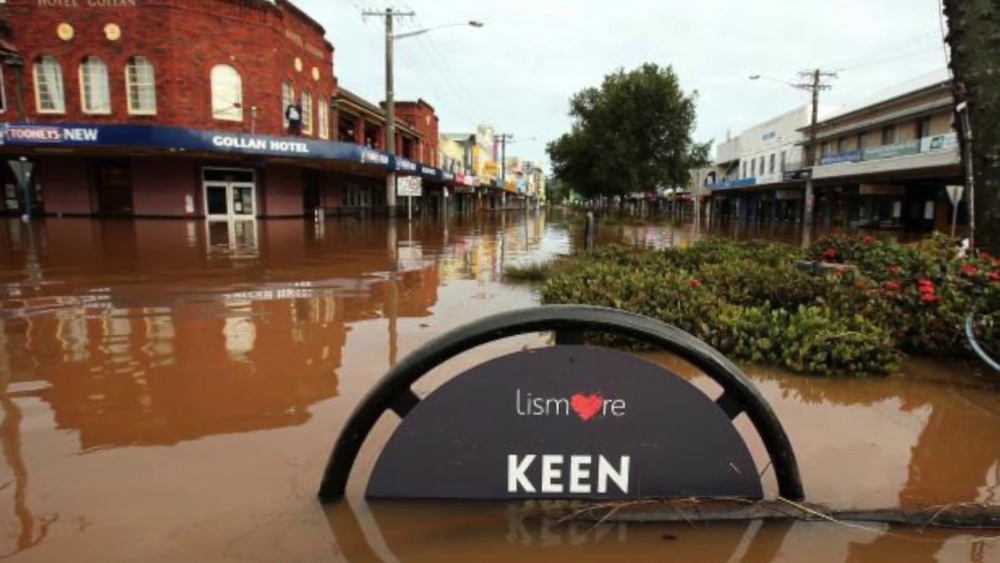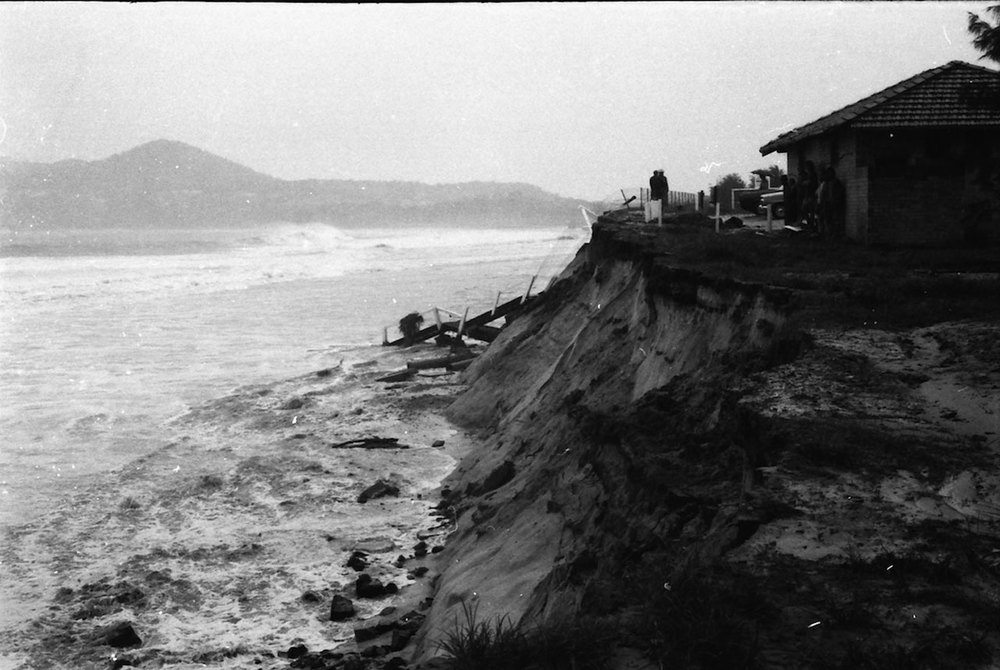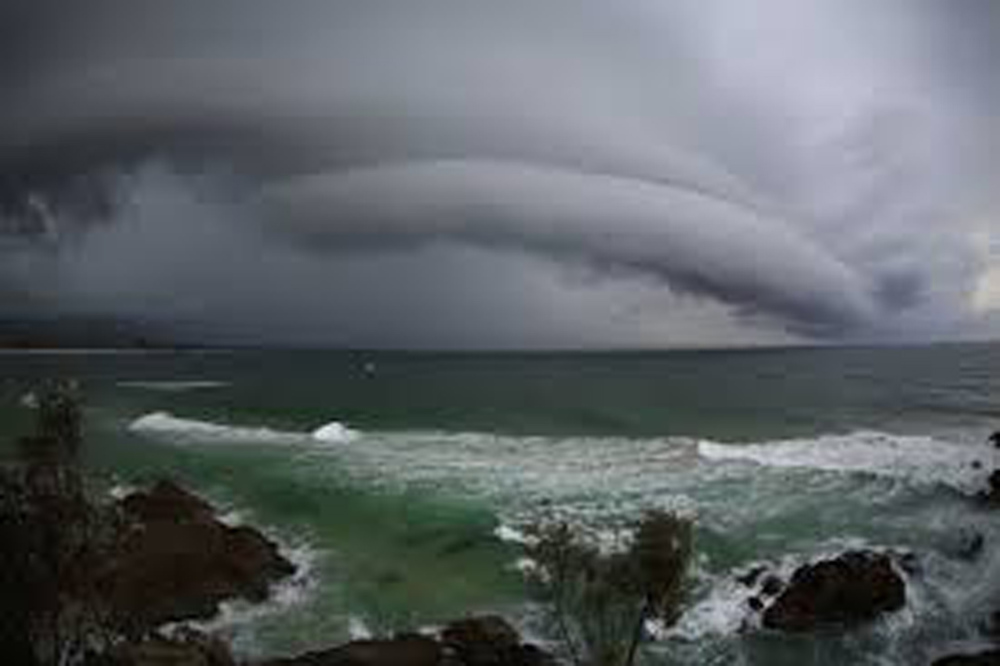SUNDAY PROFILE: Dr Helman studies severe storms and climate wobble
Liina Flynn
29 August 2020, 7:19 PM

Now retired, Southern Cross University academic Dr Peter Helman has spent his life studying storms. His research culminated in a PhD from Southern Cross University and shows some startling data about severe storms and climate wobble and shows the relationship between coastal storm events and Lismore floods.
When academic Dr Peter Helman lay in bed at night in his beachside home in Suffolk Park 25 years ago, he could feel the house “wobbling” at night on its sand base, as the sea pounded the shores nearby.
“When there was a big swell, the coast seemed like jelly,” Dr Helman said. “I thought ‘my house won’t survive a big storm’.”
That was when he decided to sell up and move to higher ground. He bought a house on a large lump of bedrock at Broken Head, 300m from the sea, but he’s moved on from that too.
“The whole coast is being eroded by rising sea levels,” Dr Helman said. “Headlands will be shaved off and estuaries will fill up. Living on the coast is not sustainable.”
He tells me the beach at Broken Head would have once been 20 kilometres inland; that old sand dunes exist in inland Byron Bay and that the sea will again go inland.
“You don’t need to have a PhD or believe in climate change to realise that the sea levels are rising,” he said.
Severe storms
Twelve years ago, Dr Helman completed a six-year study of severe storms on the east coast of Australia for his PhD in Resource Science and Management at Southern Cross University, and the results should send strong messages to people living along the coastlines of Australia.
His research documented 200 years of weather events, their frequencies and their effects on the coastline. Using research gathered from historic maritime records, surveys, journals, photos and scientific data, Dr Helman mapped the historical data from 1770 to 2008 and noticed there was a pattern to the weather cycles, which he refers to as the “wobble”.
Phases
He noticed there were two distinct phases of weather: wet, stormy phases and dry, calm phases – each phase lasting for several decades. At the moment, we are leaving a dry weather phase and moving into a wet, stormy one.
“There have been less storms on the east coast in the last 30 years than in the first six months of 1967,” Dr Helman said.
Dr Helman said tropical cyclone Dinah hit Surfers Paradise in 1967, and at the time, it was the most severe storm recorded in SE Queensland. Darwin had been wiped out by cyclones and storms in 1897, 1937 and 1974. Closer to home, a tornado devastated Lennox Head earlier this year, and in the past few years, severe hailstorms have been lashing the North Coast of NSW.

Lismore floods
“The next storm will be a doosey,” Dr Helman said. “Over the last 150 years, storms have dropped houses off dunes in well-known spots… Whenever we get big storm events on the coast, these are exactly the same periods we see floods in Lismore.
“In 1954, there was a cyclone that hit Byron Bay. The jetty, fishing boats and beachfront houses were damaged. At the same time, Lismore had an 11km wide major flood with two-metre waves chewing up buildings.”
Some of the earliest records of weather events around Byron Bay that Dr Helman found were in the journals of Captain James Cook from 1770.
Captain Cook
“In the Endeavour, Captain Cook came round the bay in a gale at night, with his compass and sounder,” Dr Helman said. “Joseph Banks wrote he’d seen the strongest winds he’d yet recorded.”
Early maritime records also detailed shipwrecks and recorded severe droughts and dry weather. Ships had been noted to run aground in smoke during drought periods. During the 1870 Gold Rush, the beaches were mined for gold and then surveyed. From Seven Mile to Suffolk used to be called the three-mile scrub and it was one of the main travel routes.
The current coastline can be compared to these surveys and it shows that the surveyed areas are now in the surf.
Changes
“I remember when there were trees at broken Head,” Dr Helman said as he described how the beach at Broken Head has changed.
“In the 1920s, you could drive out over the sand to the outer rocks. Now there is a surf break there. The wreck off Byron’s main beach used to be on the beach.”
At the Broken Head headland, concrete stormwater pipes sticking out of the sand once used to be part of a concrete structure located back in the dunes, but, over the last 40 years, it slowly eroded away.
Dunes
Dr Helman has been measured the dunes on the beach for decades and said they have been eroding faster than we might have expected – especially since we’ve been in a dry weather phase and haven’t had many major storms here with the energy required to move the sand around.
“I read the coast like few other people,” Dr Helman said. “When I say, ‘the sea is high today’, I don’t mean the tide. It is really high at the moment. The dunes want to be here, but the high sea level is causing erosion on such a scale that many beachfront homes are at risk.”
As well as being a scientist and ecologist, 30 years ago Dr Helman used to work as a coastal planner for Byron Shire Council.
“We still have the same problems today as 30 years ago,” Dr Helman said. “People still haven’t got the message.”
At the time, he believed coastal management plans were not addressing the issue of climate variability, or the “wobble”. He wanted to look at the issue of rising sea levels, storms and climate change in a different way and hoped to come up with some answers and affect changes in coastal planning through his PhD research.

Storm surge erodes away the coast.
Science
The science involved is a complex tapestry of weather conditions and ocean temperatures, including the SOI (Southern Oscillation Index), which is measured by differences in air pressure between Tahiti and Darwin; and the IPO (Interdecadal Pacific Oscillation) a long-term record of changing sea temperatures in the Pacific Ocean.
Dr Helman believes that the CSIRO and the Bureau of Meteorology (BOM) are still focusing too heavily on the SOI trends without taking into account the long- term oscillation of the climate.
“The rising trend of sea level is not an even rise,” Dr Helman said. “It’s a fallacy to say the coast will erode one metre per year when it may have periods of great erosion. At that time, I didn’t know it came in distinct periods.”
While he was researching for his PhD, Dr Helman made an important connection by lucky accident. He was working with two graphs: one of sea levels from the 1880s onwards and an IPO graph from the 1850s onwards.
He dropped one of the graphs and when he picked it up, it was upside down. He noticed when he held the two together that they matched up; there was an inverse correlation between the two graphs.
Wobble
The wobble of sea level over time was inversely related to the wobble of the Pacific sea temperatures. It showed that when the IPO was negative, sea level was higher than trend and the weather was in a wet and stormy period.
“The graphs are detrended, which means we take out the rises and just look at the wobble on the graph,” Dr Helman said. “In a dry phase, the wobble is largely positive. There is uncertainty, it doesn’t always relate. For example, there was a period in the 1930s when the SOI and IPO didn’t relate, we should have been in drought, but we had cyclones and coastal erosion.”
Dr Helman then decided to put his head together with fellow researcher Jeff Callaghan- who was a senior storm forecaster with the BOM and had been conducting complementary research. They combined their research and published their data ‘Severe storms on the east coast of Australia 1770-2008’.

Drought
Since then, Dr Helman has researched storms over the whole of Australia and has conducted a drought study of the Murray Darling basin using the same kind of long-term climate analysis.
Dr Helman said there were a number of other researchers in Australia now making correlations between the IPO and other scientific data, including scientists looking at droughts across Australia.
“There has been a whole rush to link climate change to the wobble,” Dr Helman said.
Climate changes
“I think of climate change in terms of sea levels and yes, the climate is definitely changing. We are certain that the temperature is rising; we can measure carbon dioxide in the atmosphere and fossil records for hundreds of years tell us that. The real crunch is sea level – we have been measuring that for over 100 years and it has risen considerably. When Europeans settled here, it was during a dry period and the sea was low, but now it is rising even faster because of climate change.”
Dr Helman said he has concerns about our creation of numerous gas platforms in the Pacific Ocean, particularly with a wet and stormy period coming again with the potential to devastate man-made structures.
Dr Helman is currently writing a number of books, including a popular version of his PhD thesis looking at how the beaches on the coast of Australia are changing.
“My aim is for surfers to understand that if people build walls on beaches, there won’t be a surf break any more,” Dr Helman said. “I hope surfers will act as a lobby group to argue for natural beaches to protect the surf. It’s already pretty crowded in the surf breaks we have without losing any more of them.”
AUTOMOTIVE
